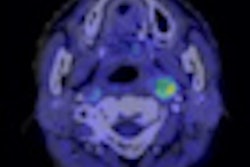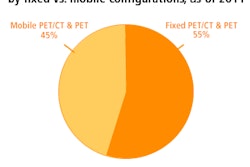Tuesday, November 29 | 11:40 a.m.-11:50 a.m. | SSG08-08 | Room S504CD
In this scientific paper presentation, researchers from Washington University School of Medicine will present their work on a novel synthesized tracer that so far has shown promising tumor imaging properties in the potential to complement MRI for evaluating patients with primary and metastatic brain tumors.The tracer, knows as α-[F-18]fluoromethyl phenylalanine (FMePhe), has been tested in microPET studies in a mouse model of high-grade gliomas.
"Fluorine-18-labeled amino acids that target system L amino acid transporters are useful for imaging brain tumors and can help guide biopsies, visualize gross tumor volume and margins, predict tumor grade, monitor response to therapy, and assess for tumor recurrence," said presenter Dr. Jonathan McConathy, PhD, an assistant professor of radiology in the divisions of nuclear medicine and radiological sciences. "If FMePhe proves to be an effective PET imaging agent for these indications, the high-yield synthesis would be an advantage for large-scale production and distribution for imaging patients with brain tumors using PET/CT and PET/MRI."
McConathy and Chaofeng Huang, PhD, a postdoctoral research associate in the division of radiological sciences, noted that the microPET data demonstrated good tumor visualization within 10 minutes of injection, as well as persistent activity in the tumor.
In addition, tumor-to-brain signal ratios were 3.9 (± 0.3)-to-1 at 50 to 60 minutes after injection, which is superior to FDG, which achieved tumor-to-brain ratios of approximately 1.3-to-1 at 50 to 60 minutes after injection in this model.
Further evaluation of this compound and structural analogues for brain tumor imaging will continue.
"We are currently comparing FMePhe with an established system L amino acid transport substrate, O-(2-[F-18]fluoroethyl)-L-tyrosine (FET), in rodent models of high-grade gliomas," McConathy added. "Additionally, we are evaluating FMePhe, FET, and other radiolabeled amino acids in mouse models of radiation necrosis to identify PET tracers that can accurately distinguish viable tumor from post-treatment changes. In the long term, we plan to translate one or more of the most promising of these tracers to improve the diagnostic evaluation and treatment of patients with brain tumors."




















